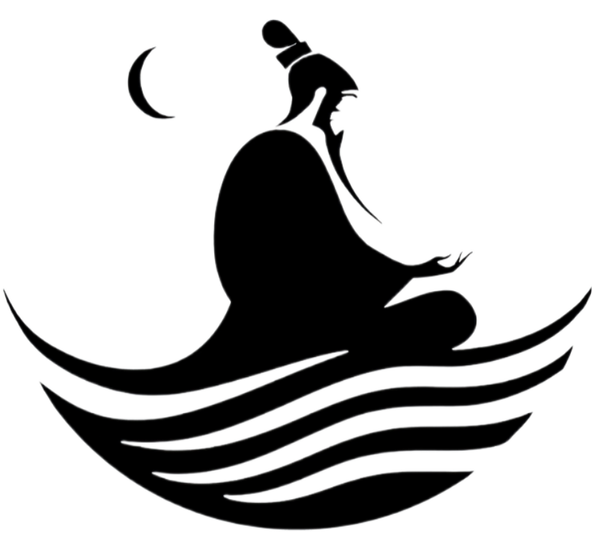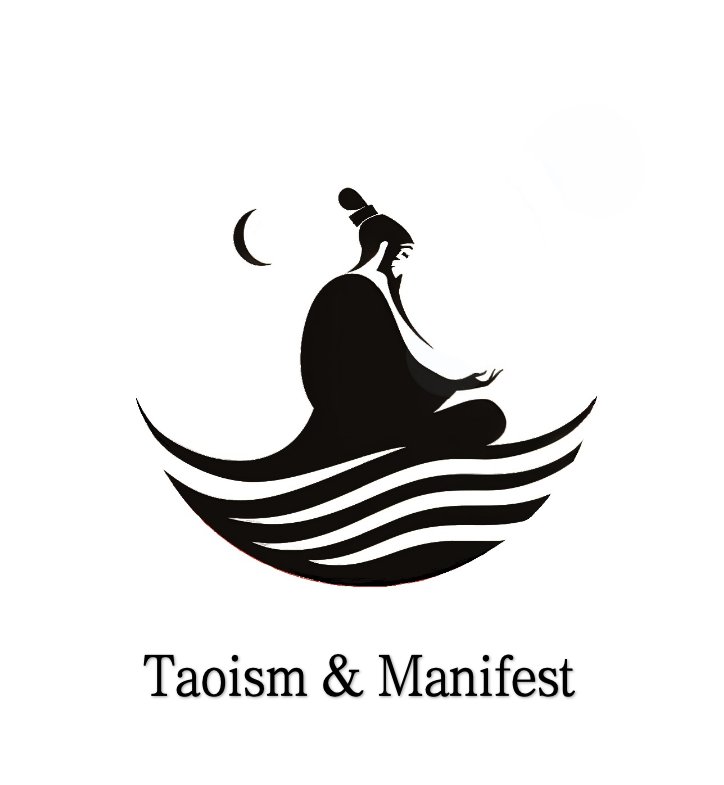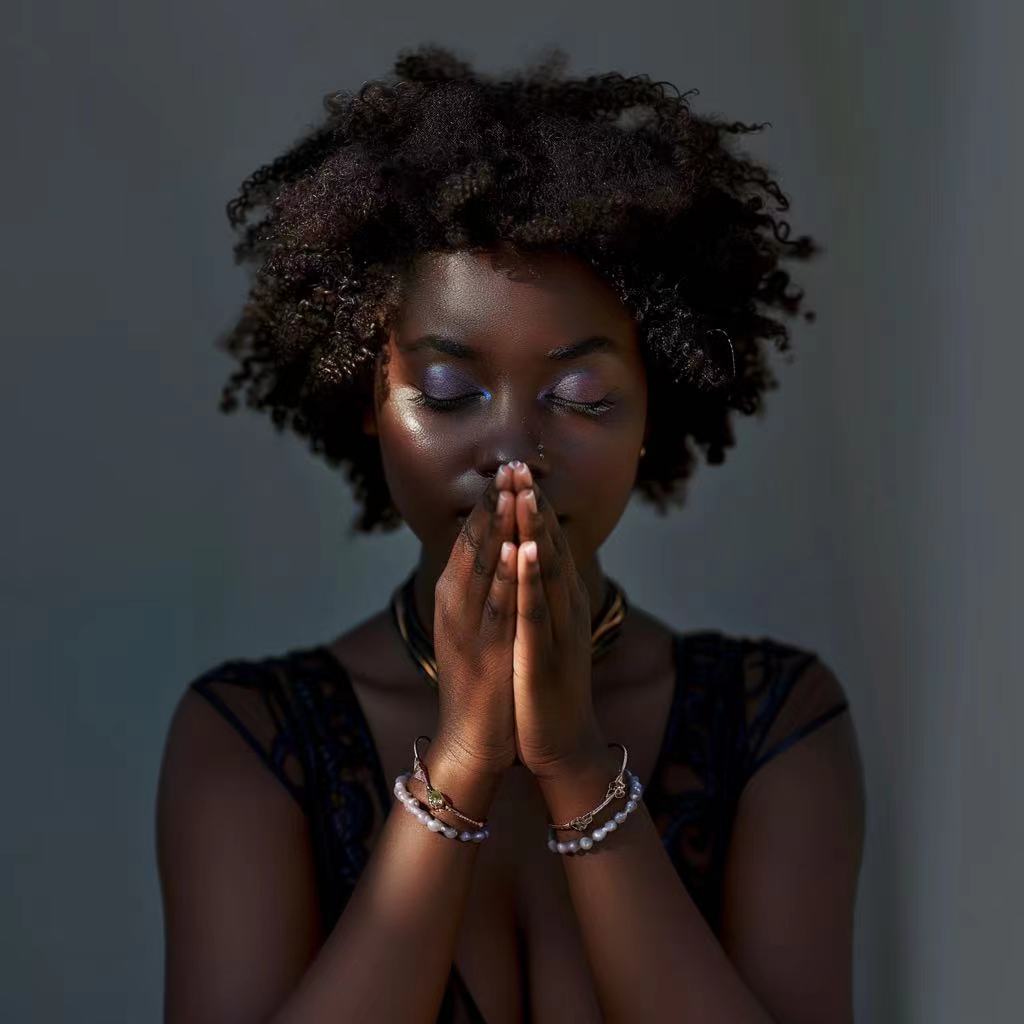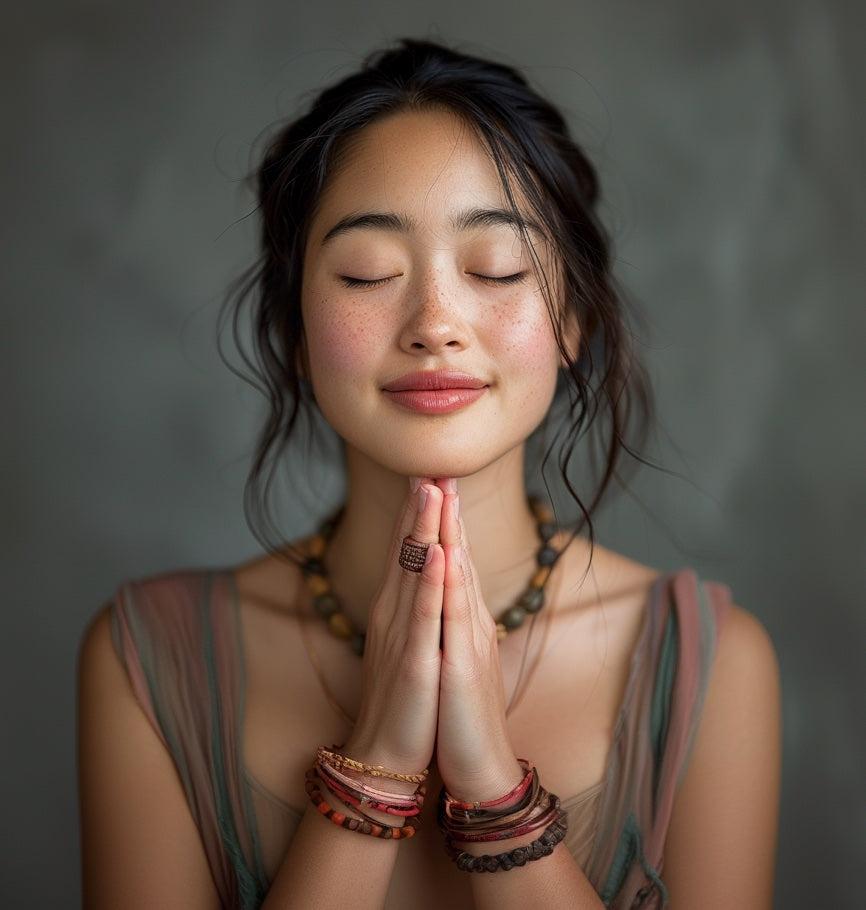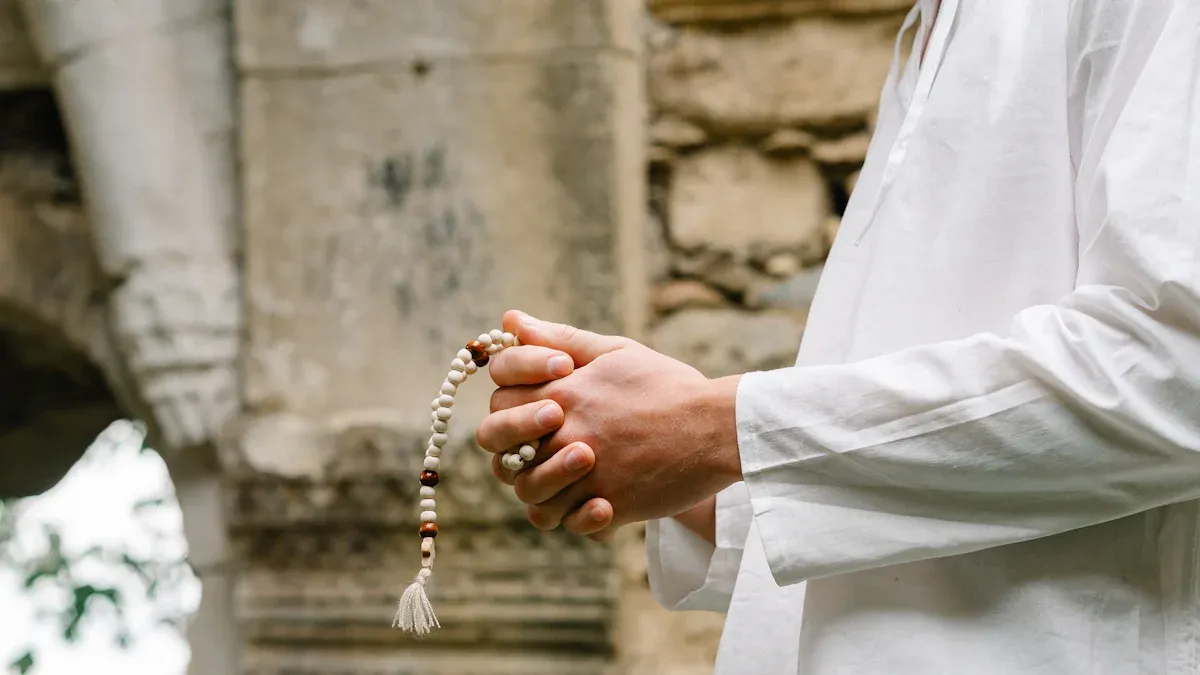
Prayer beads have been used for thousands of years. Some of the oldest prayer beads were found in Lindisfarne, England. Archaeologists found these ancient beads used for prayer. In Spain, a Copper Age tomb had over 270,000 beads. This shows that many cultures valued prayer beads. Today, prayer beads are used in Christianity, Hinduism, Buddhism, Sikhism, Islam, and the Baháʼí Faith. People use them to help focus when they pray or meditate. Prayer beads are a strong symbol of spiritual connection. (For more insights into ancient spiritual practices, read Understanding Wu-Wei Through Butcher Ding)
Key Takeaways
Prayer beads have a long history. People used them thousands of years ago. Many cultures, like ancient Mesopotamia and India, had them.
Different religions use prayer beads in special ways. People count prayers or mantras with them. This helps people focus during spiritual times.
Prayer beads are made from many things. Some are made from wood or seeds. Others use modern materials. People choose what they like best.
Using prayer beads can make meditation better. They help with prayer too. They help people feel calm and pay attention. They help people feel closer to their faith.
Prayer beads stand for the cycle of life. They show spiritual growth. They are important tools for personal and group rituals.
Prayer Beads Overview
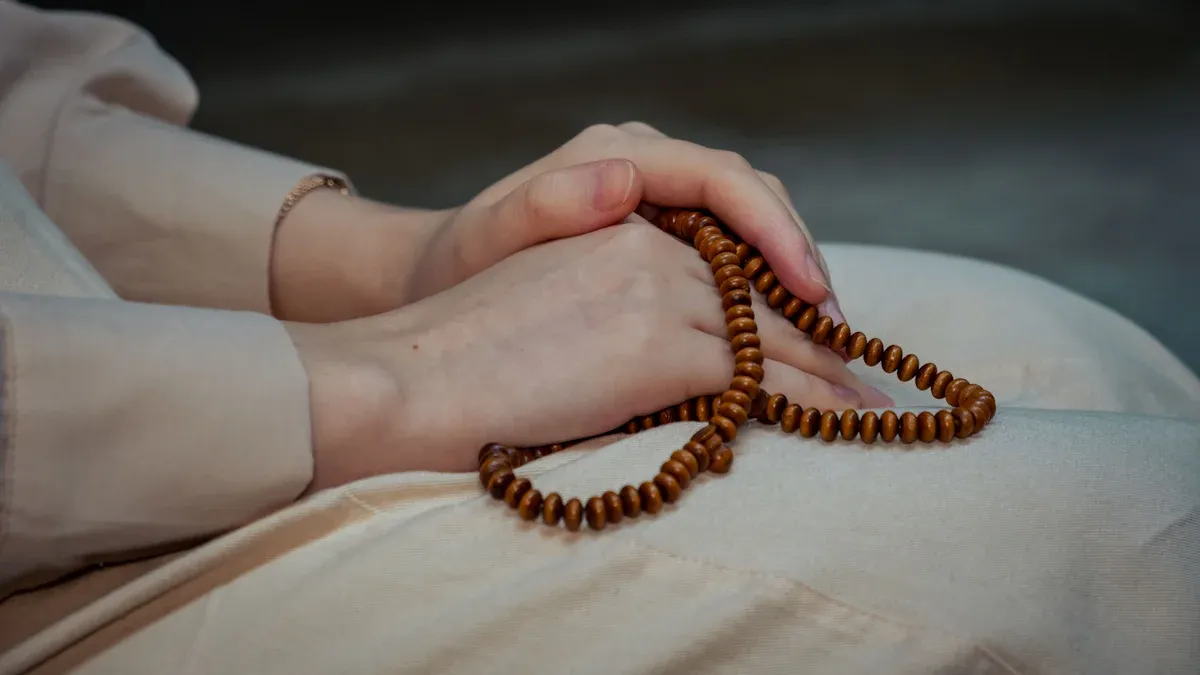
Definition
You might wonder what prayer beads are. Different religions have their own ways to use them. Prayer beads are strings of beads. People use them to count prayers, chants, or affirmations. Each religion has its own style and meaning for prayer beads. The table below shows how big religions talk about prayer beads:
Religion |
Description |
|---|---|
Buddhism |
A mala has 108 beads. People use them to help with 108 mental problems. |
Islam |
Tasbih are beads for saying the 99 names of Allah or other prayers. |
Christianity |
Rosary beads help count prayers. Catholics use five sets of ten beads with bigger beads in between. |
Hinduism |
Malas are for counting prayers or mantras. They often have 108 beads. |
Sikhism |
Some Sikhs use a small mala to say prayers or affirmations from Sikh teachings. |
Prayer beads come in many shapes and sizes. You can find beads made from wood, gemstones, seeds, or even modern materials like Catalin and Faturan. These materials make prayer beads look and feel special.
Tip: When choosing prayer beads, consider those that resonate with you on a personal level. Whether you're drawn to natural materials or prefer the vibrant hues of modern synthetics, each type of bead carries its own unique energy. To understand more about how natural elements can enhance spiritual practices, learn about incorporating How to Use Feng Shui Crystals in Every Room of Your Home. For those interested in exploring the energetic properties of natural materials, consider our Natural Black Obsidian Bracelet, known for its protective and grounding properties.
Purpose
Prayer beads have important uses in spiritual life. You use them to help focus your mind when you pray or meditate. They also help you keep track of how many prayers you say. This makes your spiritual practice more organized and meaningful.
Here are some ways people use prayer beads:
You stay focused during prayer and meditation.
You count prayers or mantras.
In Hinduism, you use Japa Mala for chanting and meditation.
In Tibetan Buddhism, you use beads to gain merit by saying prayers.
Prayer beads remind you to stay devoted and committed. Different religions use different numbers and arrangements of beads. For example, Tibetan rosaries have 108 beads in groups. Korean rosaries have 110 beads with special decorations.
Prayer beads help you connect with your faith and calm your mind. You can use them every day or during special rituals.
Explore More: For those interested in incorporating these practices into your daily routine, check out our Sandalwood Bracelet with Gourd and Ring Charm, which combines traditional materials with modern design to support your spiritual journey
History of Prayer Beads
Ancient Beginnings
Prayer beads have been around for thousands of years. Archaeologists found some of the oldest beads in Mesopotamia and the Indus Valley. These beads were pretty and important for trade and culture. People in these places used etched carnelian beads with special designs. These designs showed skill and status.
Etched carnelian beads were important for trade between Mesopotamia and the Indus Valley.
Mesopotamian beads had cool patterns, like stepped shapes and guilloché designs. This means skilled workers made them in special places.
Carnelian beads from the Indus Valley were found in the Royal Cemetery of Ur. These beads are from 2600–2450 BCE. This shows the two cultures shared ideas and objects.
Early written records about prayer beads are also found in India. The cult of Shiva talked about beads before 1700 BC. The Jaina canon from the 4th century BC said Brahman monks used beads for prayer. These old texts show that beads helped people focus during spiritual times for a long time.
Note: The first written record of prayer beads in England is from the 11th century. William of Malmesbury wrote about Lady Godiva giving beads to a monastery.
Spread Across Cultures
When you look at the history of prayer beads, you see how they moved between cultures. The practice started in ancient India with the Hindu mala. Hindus used malas to count breaths and repeat mantras. When Buddhism started around 500 B.C., Buddhists began using malas too. Prayer beads spread along trade routes to Tibet, China, and Japan. Each place made their own style and meaning.
Hindus used malas to count breaths and prayers.
Buddhists kept this tradition as their religion spread.
As Buddhism reached Tibet, China, and Japan, people changed the design and materials of mala beads. Local customs made beads look and feel different.
Islamic nations learned about prayer beads through trade and contact with India and Central Asia. Muslims made their own kind called the tasbih.
Christians later started using prayer beads, making the rosary in the Middle Ages. They changed the number of beads and prayers to fit their beliefs.
"No references to malas are found in Chinese writing before Buddhism came during the Han dynasty. This means the practice may have started in India and then spread to China."
Each culture made prayer beads special for themselves. Buddhists kept the 108-bead style but used different materials. Muslims used beads to say the 99 names of Allah. Christians used rosaries to count prayers and think about spiritual mysteries.
Key Historical Milestones
You can follow the story of prayer beads through big events:
Hindus and Buddhists used japa mala to count mantras and grow spiritually.
Catholics made the rosary, which comes from the Latin word 'rosarium' meaning rose garden. The rosary became very important for Christian prayer.
Many cultures made prayer beads in a circle. This shape stands for the cycle of life and spiritual growth.
The history of prayer beads started with Hinduism about 2,900 years ago.
Buddhists and Muslims later used prayer beads for their own prayers.
Christian rosaries appeared in the Middle Ages, which was a big change in how people used beads for prayer.
Prayer beads have changed over time. Each religion and culture added new meanings and designs. Today, you see prayer beads in many forms, but their main purpose is the same: helping you focus and connect with your faith.
Prayer Beads in Religions
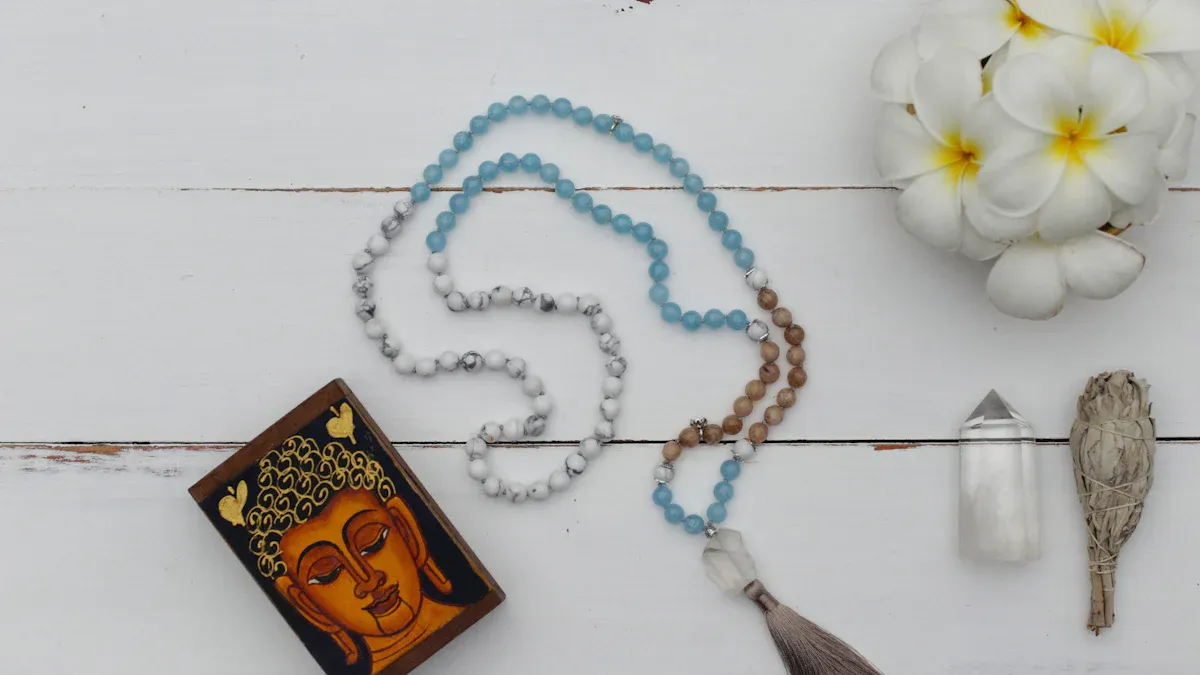
Hinduism and Buddhism
Prayer beads are important in Hindu and Buddhist traditions. In Hinduism, people use mala beads for prayer and meditation. Japa mala means counting prayers or mantras with beads. This started around the 8th century BCE. Mala beads usually have 108 beads. This number is special in both religions. Hindu malas can be made from rudraksha seeds or tulsi wood. Buddhists also use mala beads to count mantras and prayers. The Buddha said to use 108 beads to help focus and overcome suffering. You say a mantra as you move each bead. This helps you grow spiritually. The big bead in the middle shows you finished one round.
Tip: Try using a simple mala. Focus on your breath or a short mantra.
Islam
Muslims use Misbaha or Tasbih beads for prayer and remembering God. Misbaha beads usually have 33 or 99 beads. Early Muslims used beads made from dates or pebbles. The Prophet Muhammad taught his daughter Fatima a special prayer called Tasbih of Zahra. You say phrases like 'SubhanAllah' and 'Alhamdulillah' as you move each bead. This keeps you focused and close to Allah. Many Muslims and Sufis use prayer beads to feel more spiritual.
Christianity
Rosary beads are used in Christian traditions, especially by Catholics. The rosary helps you count prayers and think about Jesus’s life. The rosary became popular after Mary appeared to St. Dominic in 1208. Pope Pius V made the rosary official in 1569. Rosary beads have 59 beads in groups for different prayers. You use the rosary to say prayers like the Hail Mary. You also think about stories from the Gospels. The rosary is special because it mixes prayer with thinking about important events.
"The Holy Rosary helps you meditate on events from the Gospels."
Here is a table that shows the main types of prayer beads and how people use them:
Religion |
Type of Prayer Beads |
Description |
|---|---|---|
Hinduism |
Mala |
Used for counting mantras; made from rudraksha or tulsi. |
Buddhism |
Mala |
Used for counting mantras; often 108 beads. |
Islam |
Misbaha |
Used for dhikr; 33 or 99 beads. |
Christianity |
Rosary |
Used for prayer and meditation; 59 beads in current form. |
Each religion uses prayer beads in its own way. Hinduism and Buddhism use beads for meditation and to get rid of bad thoughts. Islam uses Misbaha for remembering and praising God. Christianity uses rosary beads for prayer and thinking about Jesus. Using prayer beads helps you stay focused and feel closer to your faith.
Meaning and Symbolism
Spiritual Significance
When you use prayer beads, you join a long tradition. Many cultures and religions use prayer beads. Each religion gives prayer beads a special meaning. You can see these meanings in the table below:
Religion |
Symbolic Meaning |
|---|---|
Islam |
Used to remember God; reciting invocations like 'Subhanallah' and 'Allahu Akbar'. |
Christianity |
Known as the rosary; used for prayers dedicated to the Virgin Mary. |
Buddhism |
Mala beads used for meditation and mantra repetition, striving for enlightenment. |
Hinduism |
Similar to Buddhism, mala beads aid in meditation and mantra repetition. |
Sikhism |
Used for meditation and recitation of God’s name, promoting spiritual balance. |
Prayer beads are shaped in a circle. This shape stands for the cycle of life and prayer. Holding the beads helps you calm your mind. You can enter a peaceful, thoughtful state. Many religions connect prayer beads to flowers. Roses are a common symbol for beauty and love. The word "rosary" means "rose garden" in Latin. This shows that praying with beads has deep spiritual meaning.
Note: Prayer beads help you organize your prayers. They help you focus on what matters most to you. (Learn about the role of meditation in spiritual practices in How Taoism Supports Lasting Health and Well-Being.)
Meditation and Ritual
Praying with beads is more than just a habit. It is a strong tool for meditation and prayer. Many religions use beads to count mantras or prayers. This helps you pay attention and stay in the moment. Using prayer beads can make you feel calm and less stressed.
You may notice you can focus better.
Many people feel more relaxed and less worried.
Prayer beads help you stay mindful and present.
Using them often can help you feel grounded and connected.
Prayer beads are also used in group rituals. When you pray with others, you feel like you belong. Group meditation with beads can make everyone feel stronger together. Some people even use digital prayer beads today. This shows that the practice can change with time but still keeps its meaning.
Tip: Try using prayer beads when you meditate or pray. You might feel more peaceful and closer to your faith.
Prayer beads have been used for a long time in many places. People used them in old rituals and also in meditation today. Some people even use them just to relax and focus. Now, artists mix old styles with new looks and eco-friendly materials. This helps keep the meaning of prayer beads strong. Groups like African healers and Native Americans use beads for healing and spiritual bonding. If you use beads for prayer or to calm your mind, you join a group that cares about self-control and growing as a person.
Aspect |
Historical Use |
Modern Use |
|---|---|---|
Origin |
Started in ancient Indian spiritual life |
Became known worldwide as spiritual items |
Purpose |
Helped count mantras and prayers |
Used in many spiritual ways, not just old traditions |
Symbolism |
Helped people focus and grow spiritually |
Still stands for self-control and spiritual growth |
FAQ
What are prayer beads made from?
You find prayer beads made from wood, seeds, gemstones, glass, or plastic. Some beads use special materials like rudraksha seeds or rosewood. The material often matches the tradition or personal preference.
How do you use prayer beads?
You hold the beads in one hand. You move one bead at a time while you say a prayer or mantra. This helps you focus and keep track of your prayers.
Can you wear prayer beads as jewelry?
You can wear prayer beads as a bracelet or necklace. Many people do this for spiritual reasons or style. Some traditions encourage you to keep beads close to your body.
Do prayer beads have to follow a specific number?
Most traditions use a set number of beads, like 108 in Hinduism and Buddhism or 59 in Christianity. You can choose any number that feels meaningful to you.
Are prayer beads only for religious people?
You do not need to follow a religion to use prayer beads. Many people use them for meditation, relaxation, or mindfulness. Prayer beads help you stay calm and focused.
See Also
Understanding Wu-Wei Through Butcher Ding
